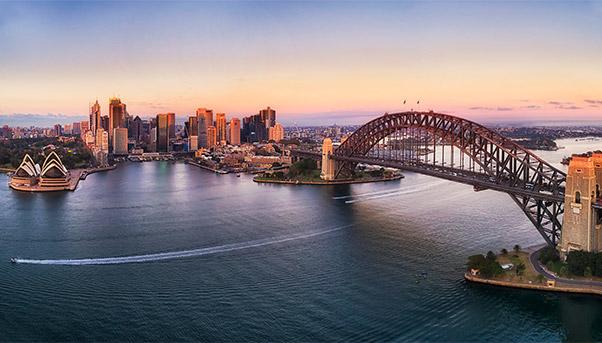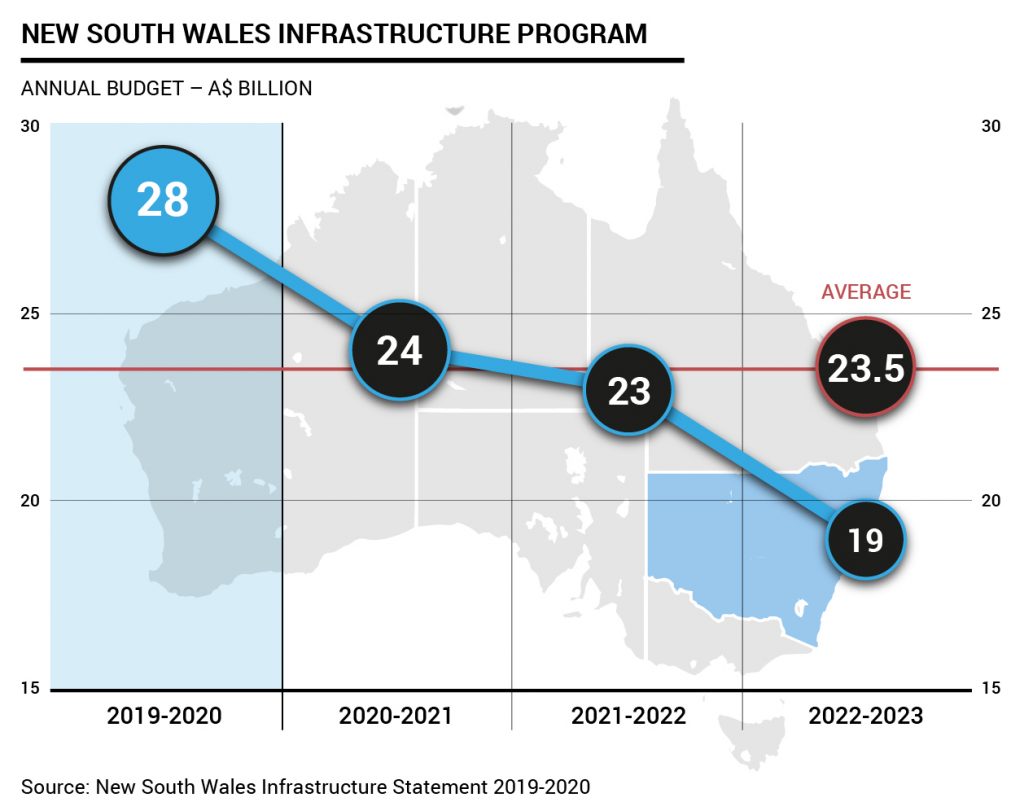
If the vitality of a city could be measured by the number of cranes, Sydney would have no rivals. At least in Australia. There are 319 cranes dotting the sky in the capital of New South Wales, compared to 213 in Melbourne, the country’s second city after Sydney.
This constellation of cranes, as documented by the Crane Index published in October by the Rider Levett Bucknall consulting company, is tangible proof of Sydney’s infrastructure boom.
And in fact – according to Domenic Schiafone, director of research and development at Rider Levett Bucknall for Oceania — most of the cranes operating in the city are positioned along public transport corridors, where new sustainable mobility transport systems are currently under construction.
«Visually, cranes across Sydney appear to be following the significant spend on transport infrastructure in the past five years creating defined lines of activity. These are north along the Pacific Highway, west along Parramatta Road, north-east along the M2 and south along the Kingsway», he said.
Transportation projects, Sydney’s pearl
The city’s infrastructure development involves the transport sector first and foremost. An AUD$93 billion investment plan ($64 billion) launched by the state of New South Wales had dedicated AUD$32.2 billion to public transport projects and AD$23.4 billion for roadway network development. Most of these projects are in Sydney.
The most important among them is the Sydney Metro, which calls for the construction of three light railway lines, the first of which (Sydney Metro Northwest) was partly built by Salini Impregilo and opened in May. The second line will connect the southwest part of the city with the center, and the last will link the central business district with the Parramatta district.
However, the new light rail network is only one of the multi-billion projects being launched to modernise the city. In early November, the New South Wales Ministry of Transport published the short list of companies (which also includes Salini Impregilo) applying to build the Sydney Gateway, a work valued at between AUD$2.2 billion and AUD$2.6 billion. It calls for the construction of a series of motorway connections between the city and Sydney Airport. We are still in the tender phase, but once completed the new network will have a capacity of 100,000 vehicles a day, of which 10,000 heavy vehicles, and will free local roads from the massive traffic of those entering and leaving the city.

Sydney’s infrastructure projects: the future of Greater Western Sydney
Both the Australian and New South Wales governments have paid particular attention to the development of Greater Western Sydney, a vast urban area where development is creating the need for new infrastructure investments.
That’s why the state and federal governments have launched the Western Sydney Infrastructure Plan with an allocation of AD$4.1 billion to build new roads and improve the surface transport lines — specially to coincide with the opening of Western Sydney International Airport scheduled for 2026.
The works funded by the plan include Northern Road, a AD$1.6 billion project to expand the highway leading to the airport, and the M12 Motorway, another highway that will connect the Northern Road with the M7 Motorway. The ultimate goal is to set up an efficient and modern transport network by 2026 to support the impact of the new airport.
The Western Sydney International Airport
Sydney needs a new airport to support the economic development of the city, but also because the population of New South Wales is expected to increase from 8 million today to 11.2 million by 2056. More inhabitants mean a bigger demand for travel inside and outside the borders of the state.
The new airport will cost AUD$5.3 billion, and will provide the city with another strategic infrastructure for its development. In fact, the airport was designed to handle an average of 37 million passengers until 2050 and then undergo more expansion that will bring it, by 2063, up to 82 million passengers.
In addition to the impact on the traffic of people and goods, the new airport will contribute to creating 28,000 direct and indirect jobs by 2031, giving an important boost to the development of Western Sydney. According to the “Airport Plan” commissioned by the Western Sydney Airport, by 2030 the area will account for 3 million inhabitants, about 7% of the entire Australian population.
One more reason to build a new airport that offers the city of Sydney an opportunity to connect with the rest of the country and the world.

